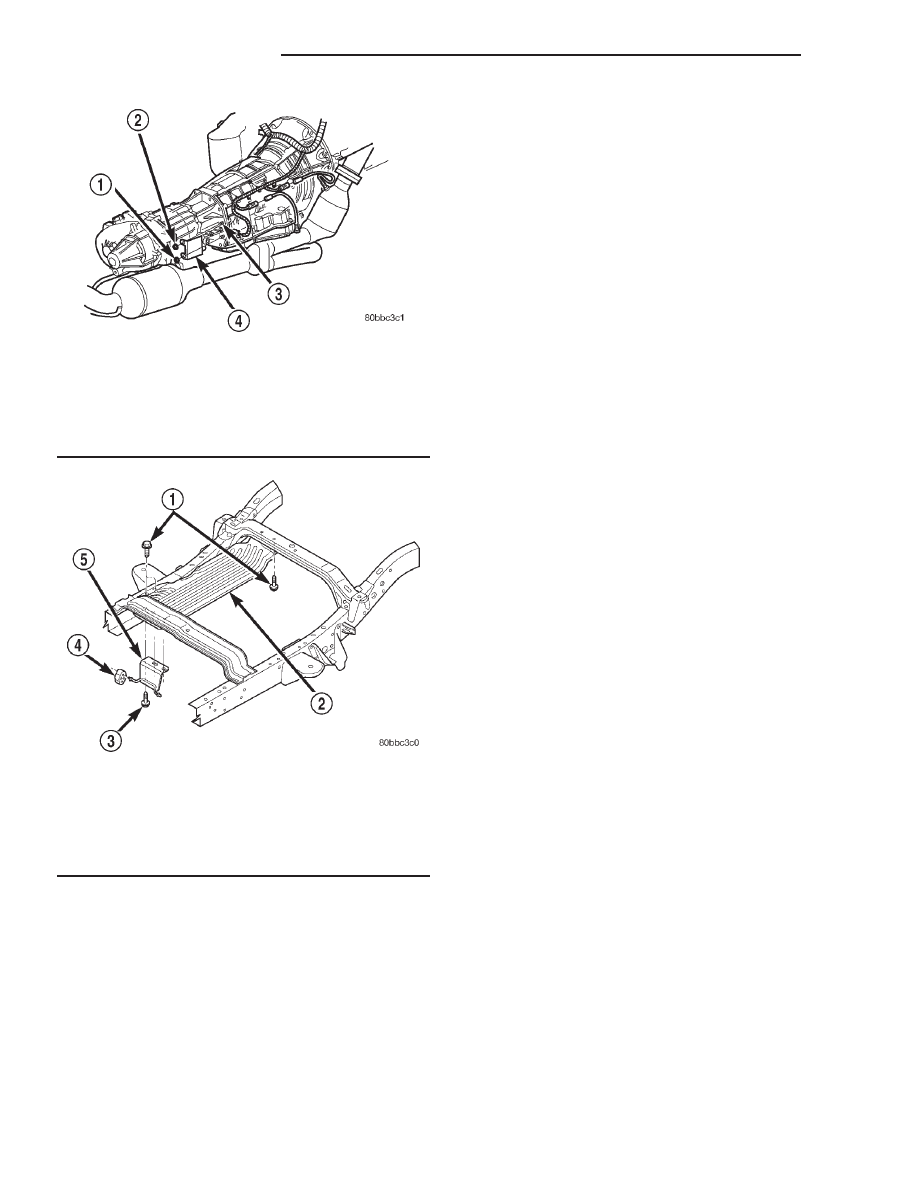Dodge Dakota (R1). Manual - part 550

INSTALLATION
(1)
Position the heat shields to the floor pan or
the frame and install the screws and/or nuts.
(2) Tighten the nuts and/or screws to specification.
Refer to Specifications in this section for correct
torque values.
(3) Lower the vehicle.
INTERMEDIATE PIPE
REMOVAL
(1) Raise and support the vehicle.
(2) Saturate the clamp nuts with Mopar
t Rust
Penetrant. Allow 5 minutes for penetration.
(3) Remove the front and rear clamp nuts.
(4) It may be necessary to loosen other sections of
the exhaust system to remove the extension pipe.
INSTALLATION
(1) Position the extension pipe in the muffler and
the catalytic converter flange.
(2) If other sections of the exhaust system where
loosened in removal, refer to the section for tighten-
ing procedures.
(3) Install the clamps and nuts (Fig. 4). Tighten
the nuts to 47 N·m (35 ft. lbs.) torque.
(4) Lower the vehicle.
(5) Start the engine, inspect for exhaust leaks and
exhaust system contact with the body panels. Adjust
the alignment, if needed.
MUFFLER
DESCRIPTION
All engines use a stainless steel muffler to control
exhaust noise levels and exhaust back pressure.
REMOVAL
CAUTION: When servicing or replacing exhaust
system components, disconnect the oxygen sensor
connector(s). Allowing the exhaust to hang by the
oxygen sensor wires will damage the harness
and/or sensor.
(1) Raise and support the vehicle.
(2) Saturate the clamp nuts with Mopar
t Rust
Penetrant. Allow 5 minutes for penetration.
(3) Remove the muffler clamp nuts from the front
hanger and the rear muffler to tailpipe connection
(Fig. 23).
(4) Disconnect the muffler from the tailpipe. The
tailpipe should be supported when the muffler is dis-
connected.
(5) Remove the muffler from the extension pipe or
catalytic converter flange.
Fig. 21 Electrical Connector Heat Shield—45RFE
Transmission
1 - BOLT RETAINER
2 - LOCKNUT
3 - STUDS
4 - HEAT SHIELD
Fig. 22 Muffler Heat Shield—4 Door Cab
1 - SCREW SELF TAPPING
2 - MUFFLER HEAT SHIELD
3 - SCREW SELF TAPPING
4 - ISOLATOR
5 - HANGER BRACKET
11 - 12
EXHAUST SYSTEM
AN
HEAT SHIELDS (Continued)